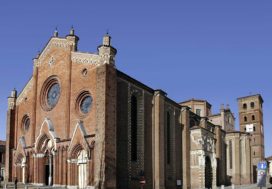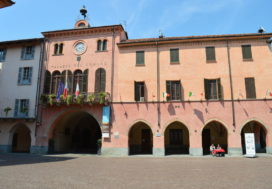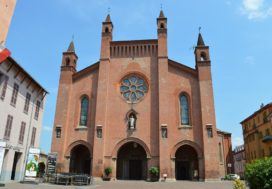Nizza Monferrato, an old town of rare beauty
Staying at the Tenuta La Romana, which is located exactly in Nizza Monferrato (in the District of Asti), visitors cannot miss visiting its lovely old town. It is located in the Monferrato area, known worldwide for its wine production, and the UNESCO stated it as World Heritage Site, due to the Barbera wine produced there. There are many and intriguing legends hovering about its origins. Anyway, the year 1225 is considered as its foundation year. Its old town is a precious treasure chest of rare beauty. The Church of St. John Lanero, overlooking the lovely Vittorio Emanuele square, has been built towards the end of the Eighteenth Century following a project designed by the architect Nicolis from Robilant. On the other hand, the fourteenth-century Church of St. Siro represents a wonderful example of Baroque Style.
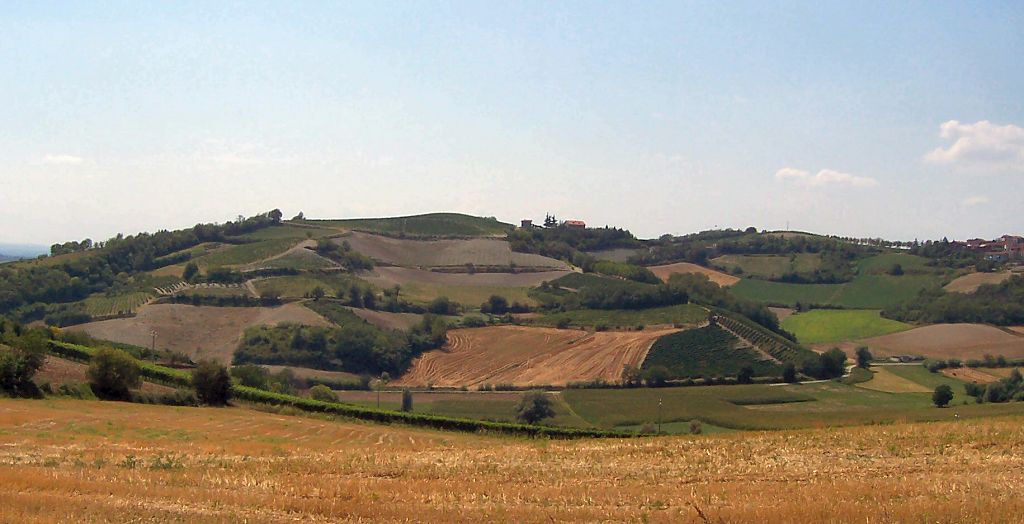
Monferrato view
Among the many religion-related buildings, that deserves our attention, in Nizza Monferrato, there are the Church of St. Hippolytus, the Church of the Madonna of the Snow, and the Oratory of the Holy Trinity, characterized by typical eighteenth-century decorations, as well as the Church of St. Michael and the Church of St. Anne. However, the true symbol of Nizza Monferrato surely is its imposing Town Hall, from the XIV Century, including its city tower.
The De Benedetti Palace, built during the XVIII Century, represents a prestigious and historic building, which stands right in front of the Town Hall. Walking by Pio Corsi instead, you will arrive at the Crova Palace, wonderful building from the XVII Century. In the spacious Garibaldi Square, you can find the Boarium Forum. Another interesting place is the Hospital of the Saint Spirit, which commends quite ancient origins. Along the extraordinary porches in via Carlo Alberto, it will be possible to admire some exquisite houses dating back to the XVIII and XIX Century, besides the most typical shops of Nizza Monferrato.
Canelli, where the grapevine is cultivated since the age of the Urbe
Also the lovely Canelli must be visited, if you are spending some time in Piedmont, in the District of Asti, at the Tenuta La Romana, located in Nizza Monferrato (in the District of Asti, too). Besides being another Monferrato hamlet stated as World Heritage Site by UNESCO, Canelli was already a location where important human settlements developed during the prehistoric ages. The grapevine cultivation was quite common during the Roman rule. In 961 A.D. took the definition of city. Canelli offers its visitors many beauties, such as the famous Gancia Palace, also known as Canelli Castle, which was built during the XI Century. After its destruction in the XVII Century, the architect Arturo Midana turned it into an elegant house during the ‘30s.
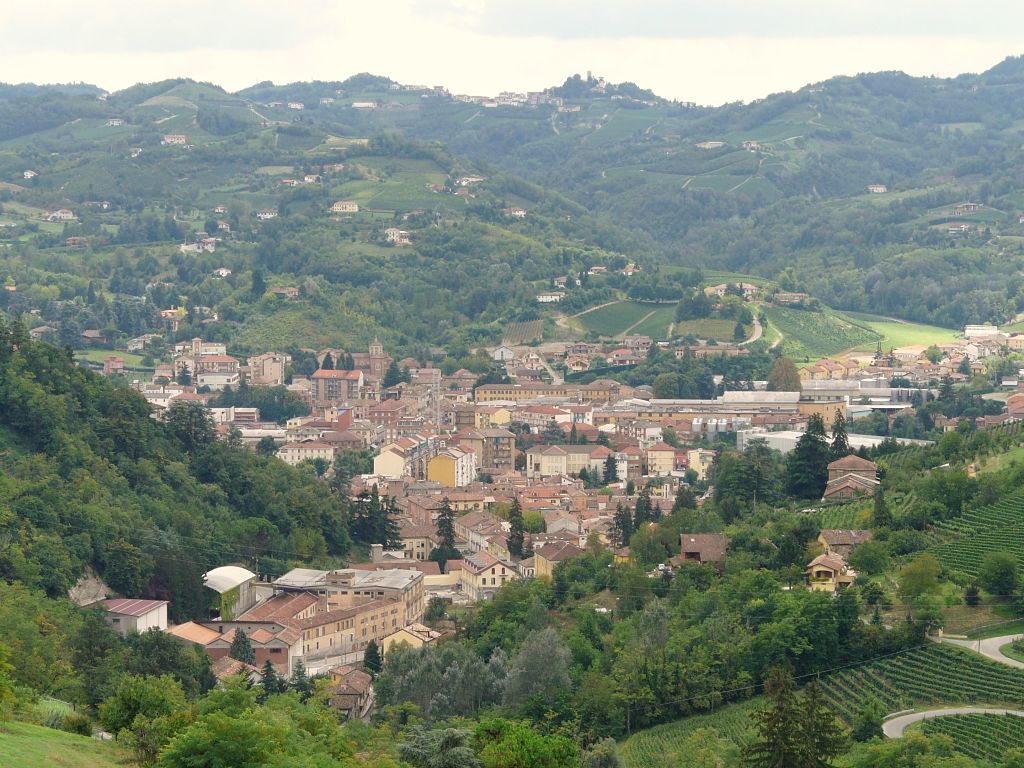
Canelli view
Among its religious buildings, stands out the Church dedicated to St. Thomas, from the XII Century, rebuild during the XVII Century, and enlarged towards the end of the Nineteenth Century. Inside it, there are many canvas paintings clearly baroque. Located on a higher level than the rest of Canelli, the Church of St. Leonard dominates it. Moving out from Tenuta la Romana, in Nizza Monferrato, the only way to complete a visit in Canelli is going to discover its famous underground cellars, true examples of engineering masterpieces, underground “cathedrals”, where they preserve the bottles of its known spumante.
Acqui Terme, and its wholesome thermal waters
Acqui Terme, in the area of Asti, in Piedmont, owes much of its fame to its thermal springs. Really appreciated since the Roman age, which originated many legends about its birth, such as the one that tells some settlers coming from the Ancient Greece founded it. It is a true pleasure walking down its roads, discovering quietly its many jewels, such as the Church of St. Francis, which stands near the Bollente. The building shows an imposing façade, a precious wooden front gate, and inside it, you can admire a canvas painting made by Guglielmo Caccia Moncalvo.
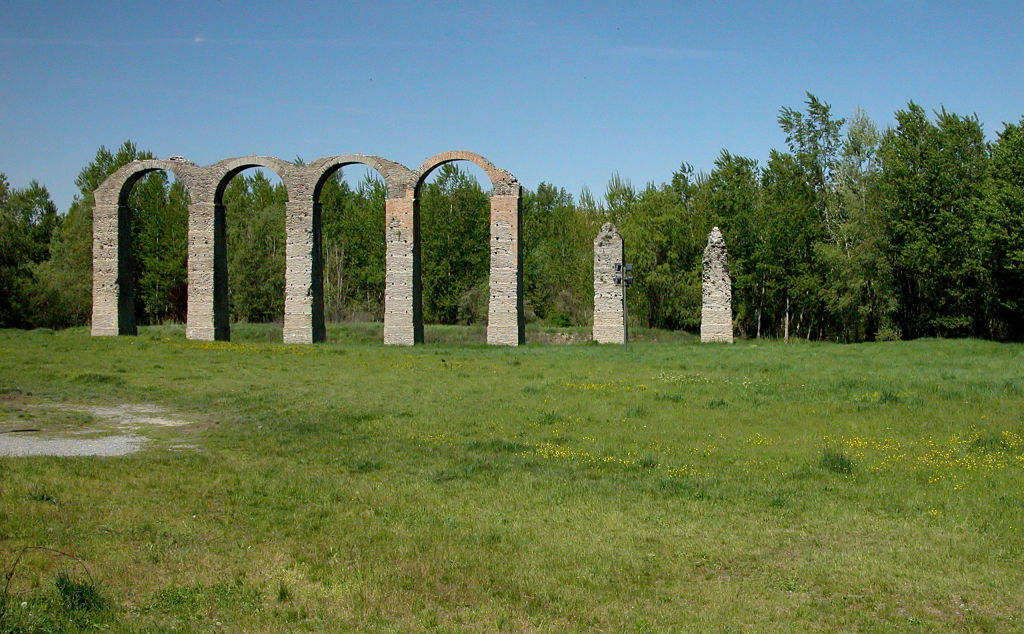
Acqui Terme remains of ‘ Roman aqueduct
The Cathedral of St. Mary Assunta, built from the X Century, is a typical example of Romanic style. Its interiors are enriched by decorations from the Eighteenth and Nineteenth Century. The triptych of the Annunciation has a great aesthetic and symbolic value, as well as the baroque altar. The Church dedicated to St. Peter, clearly early Christian, is another gem offered its visitors by the wonderful Acqui Terme.
Bollente Square, also known as “Bollente”, is located in Corso Italia, in the core of the village. There is a precious octagonal aedicule, which is the springs of a legendary healing water. It is called “Bollente” due to its temperature, which is around eighty degrees Celsius. Here you can also admire the splendid City Tower.
Levi Square, besides hosting the Church of St. Francis, shows also two interesting buildings: the Town Hall and the Robellini House. There are more incredible and astonishing examples of architecture to admire, such as the Episcopal Palace, the ancient St. Mary’s Superior Hospital, the Paleologi Castle, as well as one of the symbols of the town, which is the Roman aqueduct.



